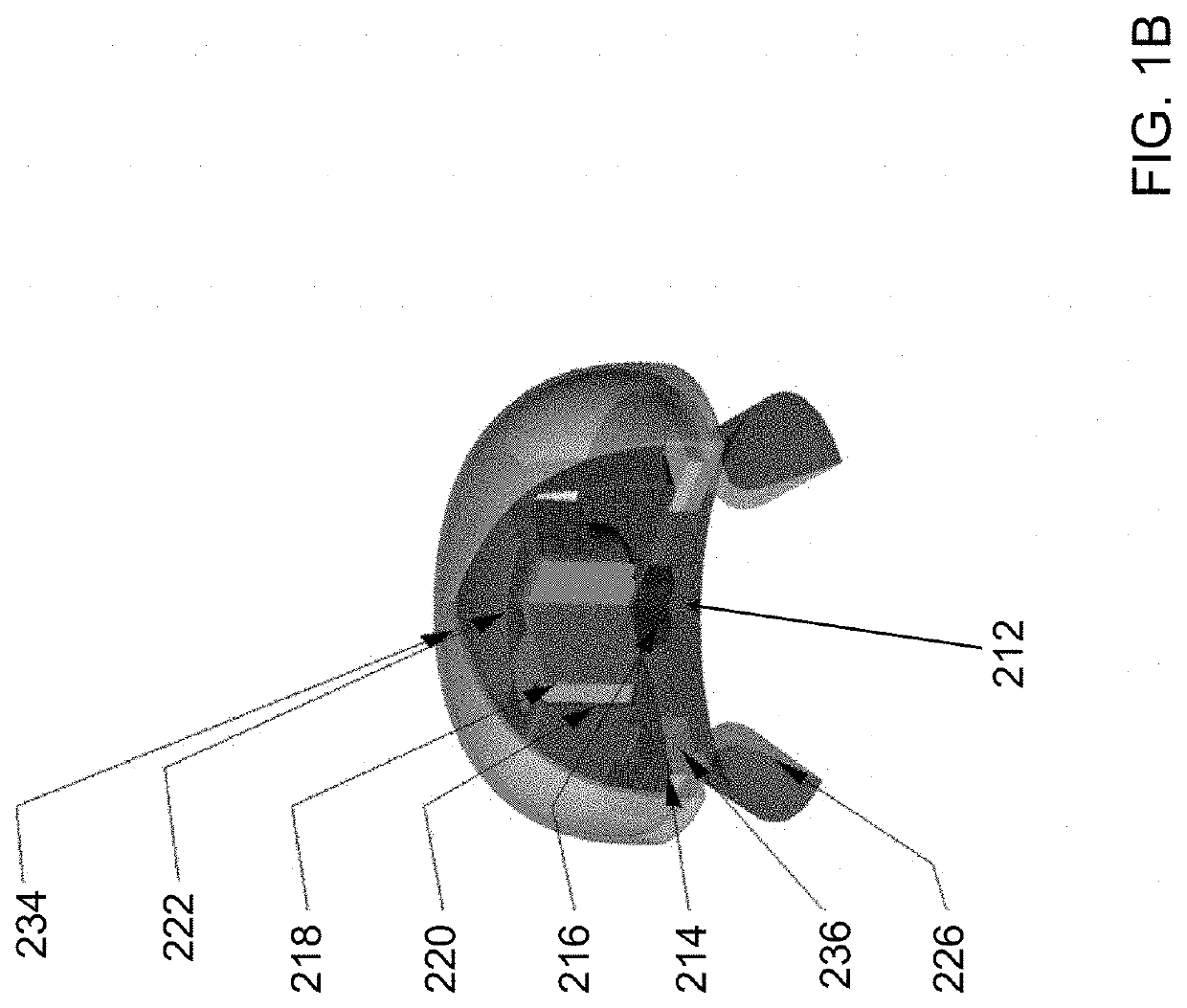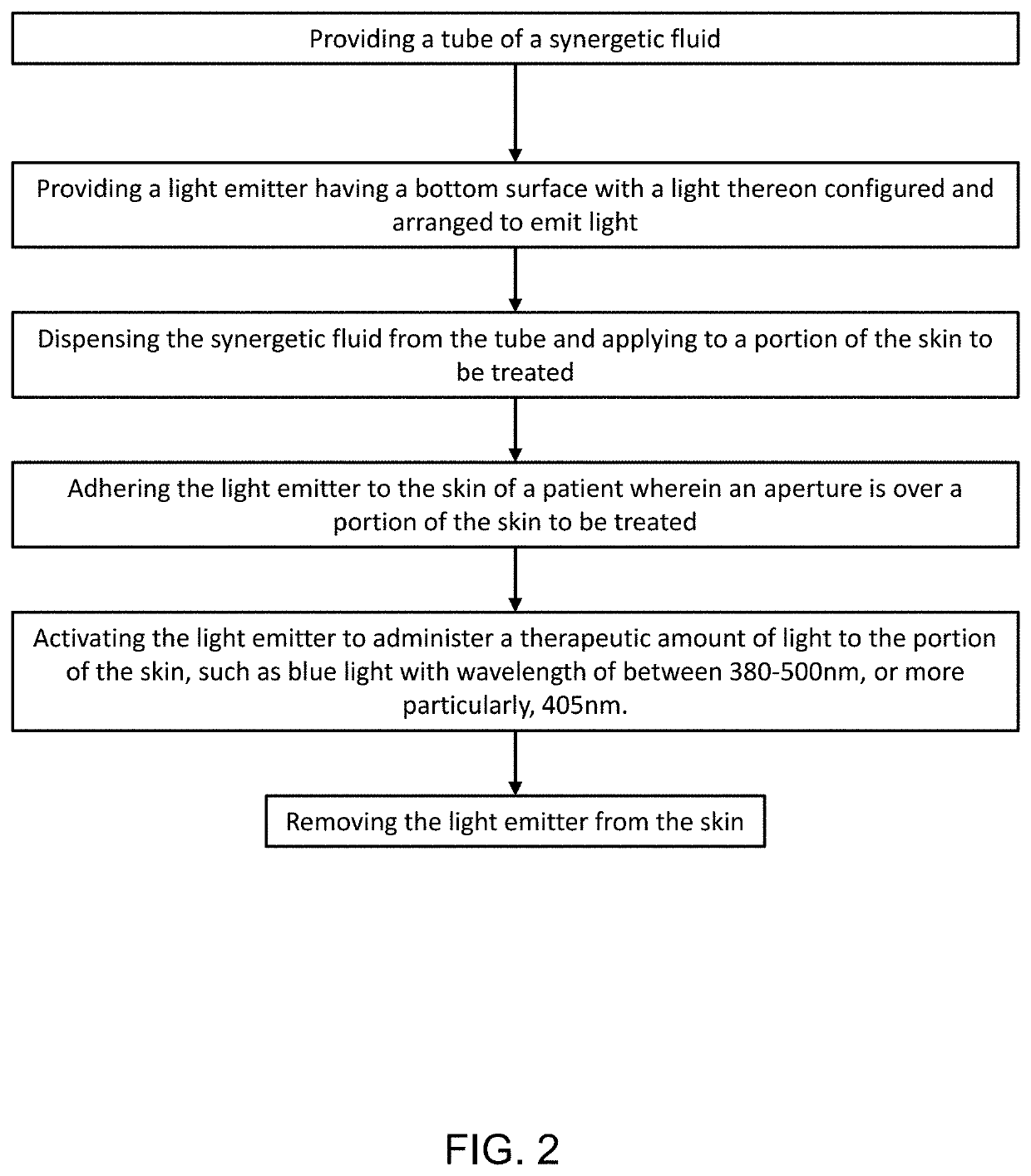Adhesive phototherapy method, system, and devices for acne
a phototherapy and adhesive technology, applied in the field of acne treatment methods, can solve the problems of depression or suicide thoughts, psychological side effects, self-esteem reduction, etc., and achieve the effect of reducing adherence and effectiveness, and avoiding behavioral changes
- Summary
- Abstract
- Description
- Claims
- Application Information
AI Technical Summary
Benefits of technology
Problems solved by technology
Method used
Image
Examples
Embodiment Construction
[0034]As will be described in greater detail below, the phototherapy devices, system, and methods are described herein. The devices can generally include a light emitter and an attachment device with an aperture that attaches to the light emitter. The attachment device can permit the device and the associated housing to removably attach to a user's skin at a variety of locations without concern for where the device is going to be used. Further, the attachment device advantageously allows for application of light-based phototherapy without the need for the user to continuously hold the device in place. Further still, the small foot print of the device advantageously will not obstruct the user's ability to see or perform other daily activities.
[0035]In a first embodiment, referring now to FIGS. 1A and 1B, a phototherapy device is shown generally at 200. The device can generally include a housing 230 and a light emitter 212. The housing 230 can be formed from materials including silico...
PUM
| Property | Measurement | Unit |
|---|---|---|
| size | aaaaa | aaaaa |
| depth | aaaaa | aaaaa |
| wavelengths | aaaaa | aaaaa |
Abstract
Description
Claims
Application Information
 Login to View More
Login to View More - R&D
- Intellectual Property
- Life Sciences
- Materials
- Tech Scout
- Unparalleled Data Quality
- Higher Quality Content
- 60% Fewer Hallucinations
Browse by: Latest US Patents, China's latest patents, Technical Efficacy Thesaurus, Application Domain, Technology Topic, Popular Technical Reports.
© 2025 PatSnap. All rights reserved.Legal|Privacy policy|Modern Slavery Act Transparency Statement|Sitemap|About US| Contact US: help@patsnap.com



